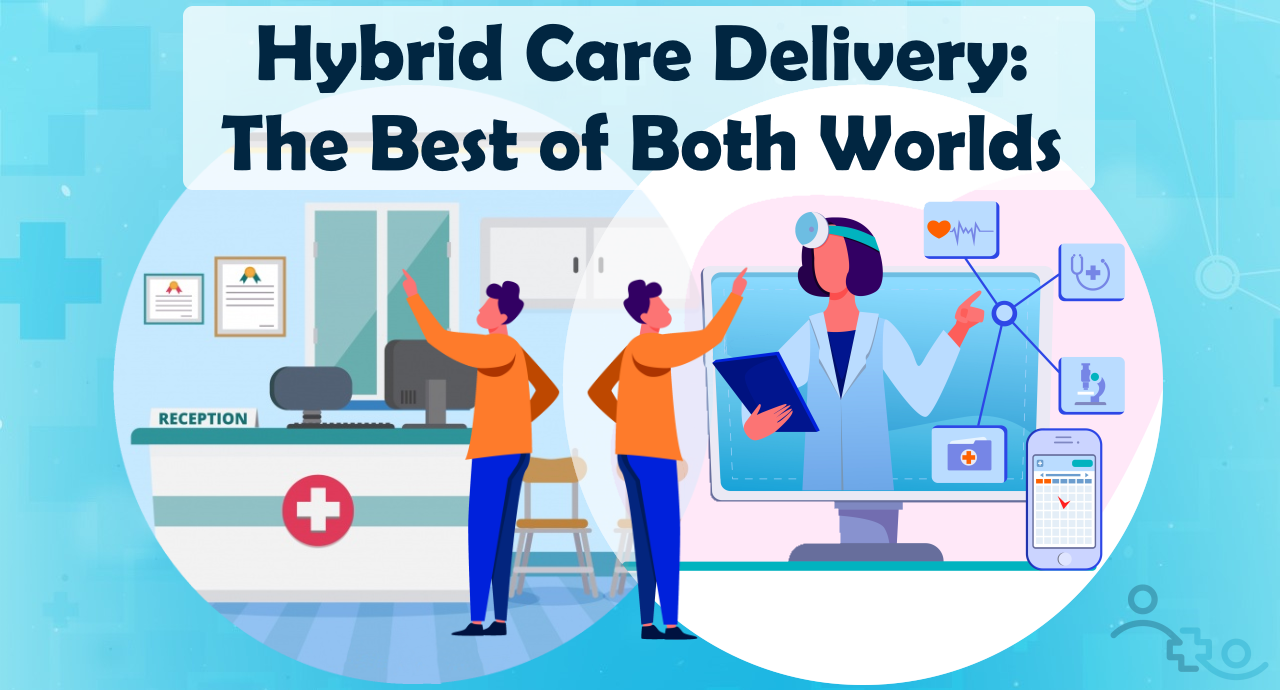The delivery of care is one of the last domains to be taken “online”.
30 years ago most banking transactions were conducted in a bank. 20 years ago most trips were booked in travel agencies. 15 years ago most books, electronics and other goods were purchased in stores. And 10 years ago most of us hailed a taxi by waving our hands in the air or calling one of those memorable numbers.
But the delivery of care, seeing a doctor? For that we still had to schlep ourselves into the dreaded waiting rooms, fighting traffic, parking lots and elevators along the way. All for what took 7 minutes at best to accomplish, save the small talk with the nurse and the needle prick (or worse).
Yet telehealth has been around for as long as distance communication has been available: In 1958 the Mayo Clinic in Rochester, Minnesota received an EKG from Australia via a rudimentary data transmission system. The EKG was read and the assessment phoned (or telegraphed) back to Australia. Telehealth at its finest (for 1958).
In 1968, the designated physician in charge of covering the Boston Logan airport was tired of having to drive from Mass General to the airport for his shift (even then, Boston traffic was undesirable) and subsequently engineers installed an “interactive television microwave link that provided electrocardiograph, stethoscope, microscopy, voice, and other capabilities”. TeleExams at their finest (for 1968).
And the list goes on and on. The University of Virginia, just to highlight one modern success story, has been running a strong telehealth program for 25 years since 1995, now practicing medicine at a distance across at least 60 specialties at over 150 partner sites.
In the 17 years that I’ve been in the field, starting with a continuous heart rhythm monitor developed at the Mayo Clinic, advances in telehealth have been slow at best. In 2012 a resounding success meant ramping from 0 to 500 telehealth visits a year across eight different specialties.
A Black Swan: The Covid-19 Health Crisis
That all changed in March 2020 with the world-wide pandemic and the subsequent mandated social distancing measures. While on site with a client in rural Vermont (working on said slow rollout of telehealth) we launched telehealth within 2 days, ramping from 0 to 600 visits a day (!) in less than 10 days.
The need (and desire) for physical distancing has definitely brought telemedicine into the spotlight and a good number of healthcare organizations, namely those who had already invested in dipping their toes into the virtual care water, have done a great job in expanding their capacity and quickly rolling out “true” telemedicine (i.e., the use of live audio/video vs. telephonic audio-only interactions).
But many are struggling and we are hearing numbers as high as 99% phone-only visits. Others still remain hesitant to explore the use of true telemedicine via a live audio/video feed. For those organizations I’ve written extensively in the past about a great telehealth launch checklist and the six hallmarks of telehealth success.
A Brave new (Hybrid) World
As the initial frenzy of launching and optimizing telehealth services is waning, it is becoming increasingly obvious to those “having ordinary skill in the art”, that telehealth, as as a care delivery mechanism, is not only here to stay, but will have to become an integral part of the incumbent healthcare delivery system if said system is to survive the next 5 years with its current business model.
Just like the 2008 financial crisis gave birth to a whole set of companies and technologies that are now household names (Uber, AirBnB, Instagram, iPhone, etc.), so too the Covid-19 health crisis will by 2021 have catapulted a whole new set of companies into the consciousness of the broader public. And we need to remind ourselves that those companies that emerged in 2008 displaced a whole set of established players (Blackberry anyone?) that felt quite safe at the time.
Thus the best strategy is to look forward about 12 months and determine how this “virtual only” world that many healthcare organizations are now operating under, can graciously morph into a hybrid model, where care is delivered in-person as well as at a distance.
Telehealth is A Clinical Tool
We have long maintained


At times telehealth may be a good, an appropriate tool and other times it may not. It’s neither a panacea nor is it a modern technology to be shunned. Sticking one’s head in the sand is not going to make telehealth blow over. What is needed is a strategy that guides the effective use of telehealth when appropriate while leaving room and support for the traditional in-person care delivery.
In the upcoming weeks and months I will cover this and related topics as I continue to work with forward thinking leaders who would rather create the future than having it thrust upon them. For now let me jump back into pragmatism.
Operational Considerations While Re-Opening Practices
From the beginning of the Covid-19 health crisis, the safety of the patients, the safety of the clinicians and the safety of the staff was always on everyone’s mind as virtually everybody turned to telehealth as a solution. Now that we understand how infectious the disease is even without symptoms and in the absence of reliable treatment for those people severely affected by the virus, it is more important than ever to continue to keep everyone safe.
While we averted projected doomsday scenarios of severe shortages, given the increasing numbness and fatigue surrounding the distancing and personal protection measures (like wearing a mask in public or washing your hands to two renditions of “Happy Birthday”) a second wave of high infection rates is quite feasible and we need to stay vigilant to keep everyone safe.
Yet there are practical limitations to the volume that an in-person practice can effectively handle. For one, physical distancing best practices require that we should not create unnecessary high volumes at any of the bottlenecks – registration, waiting room, check out, etc. Furthermore there is the consideration of potential limited availability of hospital-grade personal protective equipment.
Given these constraints, here are five recommendations on how to best organize a hybrid in-person and virtual care practice:
- Staggered schedules: Stagger your in-clinic physicians by enabling half of them to work remotely from home where feasible or clean, safe, alternative work locations. You can schedule clinicians alternatingly for half-day or full-day shifts.
- Optimizing use of staff: Clinical and administrative support staff, when properly set up and trained for remote work, can also perform many supportive tasks from home, such as Telemedicine TechChecks, vital-sign collection and Medication reconciliation.
- Batch scheduling: While pre-Covid-19 for some practices I favored the “interlaced” scheduling model where telehealth visits are “sprinkled” throughout the schedule, during Covid-19 I strongly recommend batching all in-person visits and all telehealth visits.
- Built-in buffer times: While your volumes are still below peak, we recommend to build in additional buffer times between visits. For in-person visits this time must be used to account for personal hygiene (such as hand-washing or changing gowns or replacing face masks) but also for the additional time patients need to “make it” to the exam room. For telehealth visits this time can be used to finalize the clinical notes and to also account for the occasional tardy patient. Once volume is back at peak level, most should have worked out any tweaks and the buffers can be shortened or altogether eliminated.
- Minimizing Virtual Wait Times: Waiting in the clinics’ waiting rooms (with their infamous magazines) is annoying enough; having to sit in front of a computer staring at a video of yourself (when you could be folding your laundry or emptying the dishwasher – Ha!) is even more annoying. Just like with any customer experience improvement, communication is key. If the physician is running behind, a designated staff needs to call the patient and let them know and give patients the option to be called when the physician is 5 minutes out. If restaurants can give you a buzzer, so can modern healthcare providers.
The Key Success Factors for Hybrid Care Delivery
In closing, I want to remind you that the basic principles of excellent telehealth design and implementation still apply when designing and implementing a hybrid care delivery system.
- Care delivery is a workflow challenge and given the new world where PPE and distancing is here to stay for about a year, the workflows for scheduling, pre-visit, visit, and post-visit need to be defined for both, the in-person and the virtual visits.
- Users need to be trained – on the workflows and on the technology. And they need to have access to qualified support.
- First and foremost, moving into a hybrid model requires a lot of change on top of the uncertainty, anxiety and fatigue. Thus a vigilant focus on organizational change management is critical in order to be successful.
What is your organization considering regarding the re-opening of clinics? Will you continue to let people work from home? Is your volume back to pre-Covid-19 levels? Let me know through any of the options below.








To receive articles like these in your Inbox every week, you can subscribe to Christian’s Telehealth Tuesday Newsletter.
Christian Milaster and his team optimize Telehealth Services for health systems and physician practices. Christian is the Founder and President of Ingenium Digital Health Advisors where he and his expert consortium partner with healthcare leaders to enable the delivery of extraordinary care.
Contact Christian by phone or text at 657-464-3648, via email, or video chat.







Leave A Comment